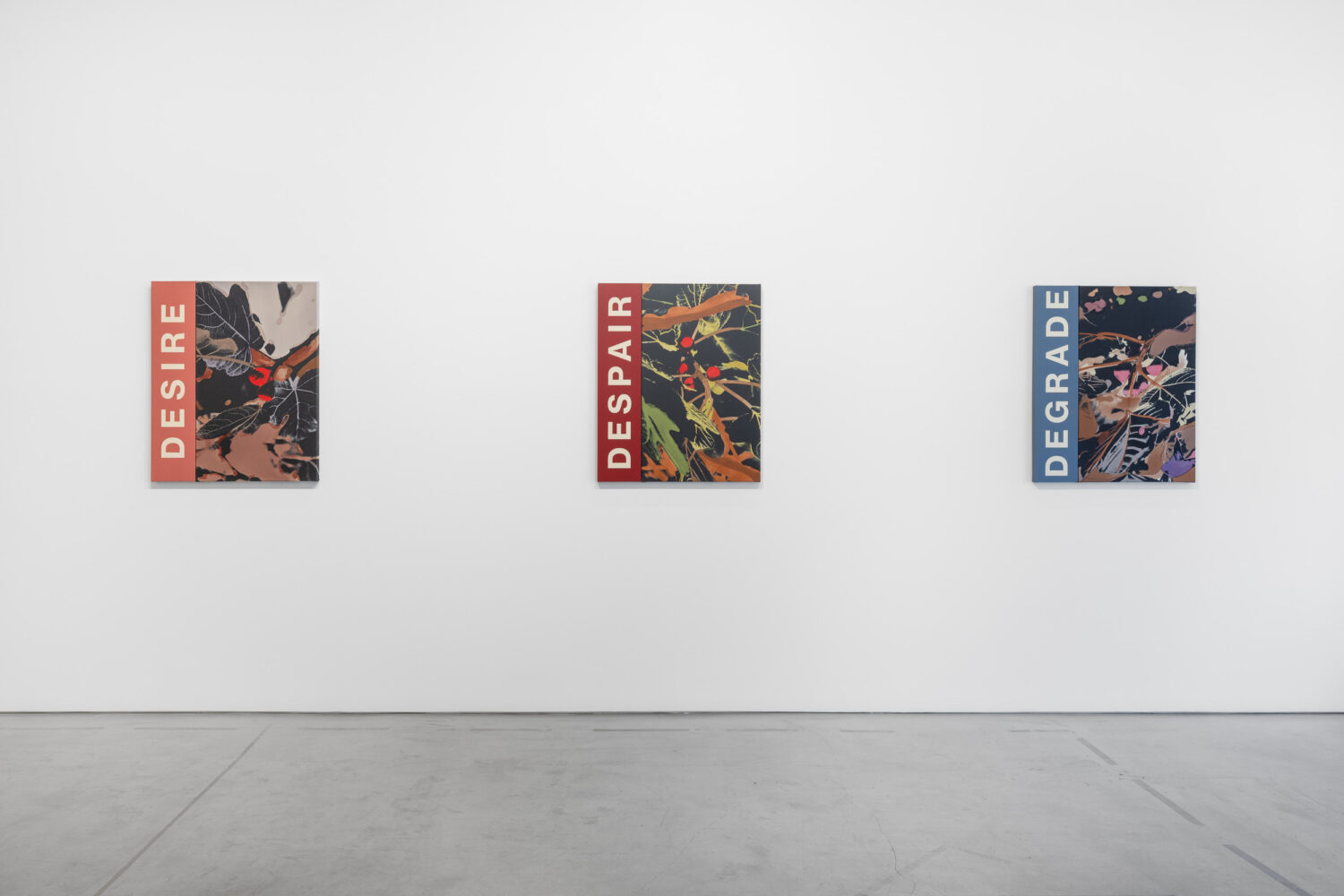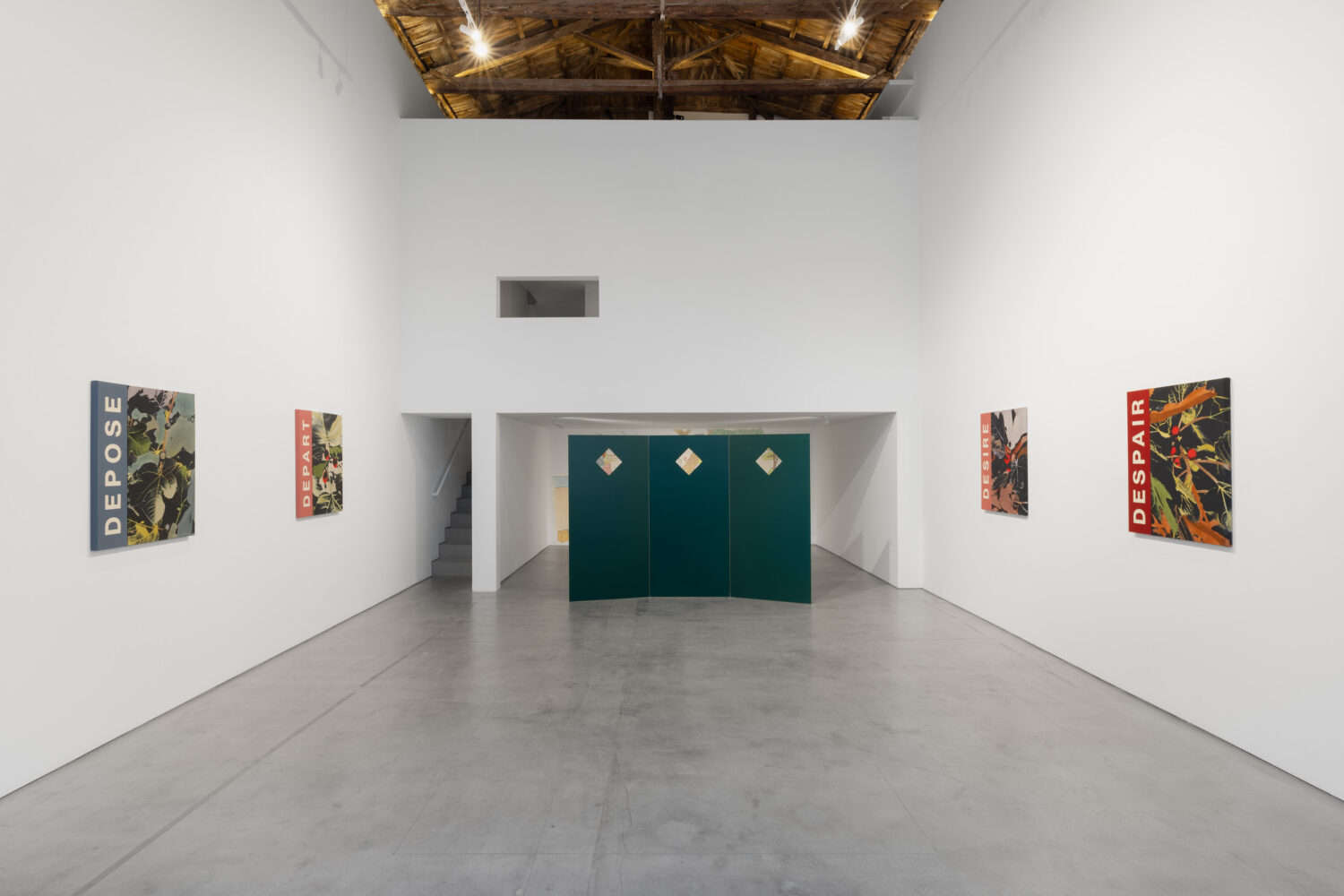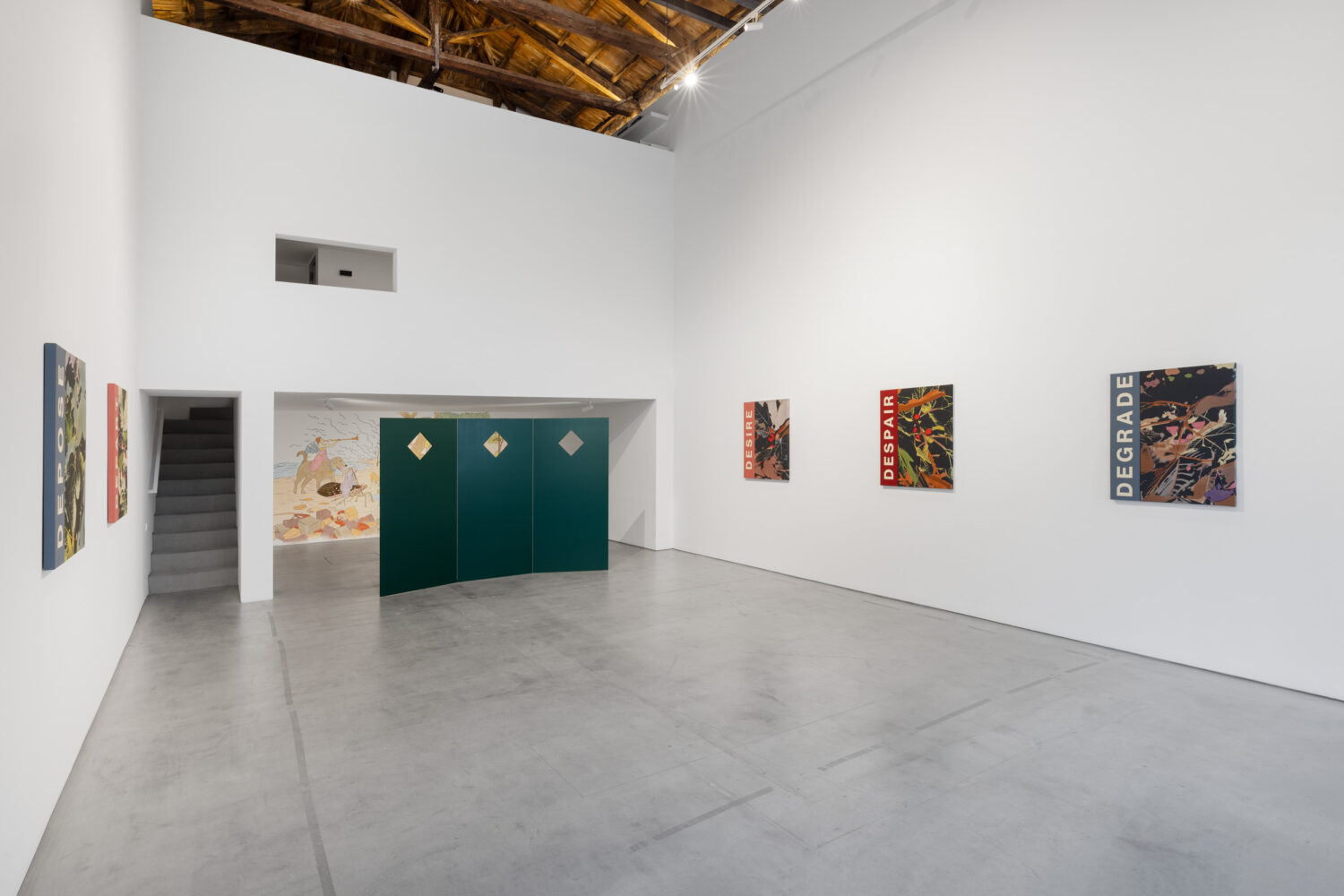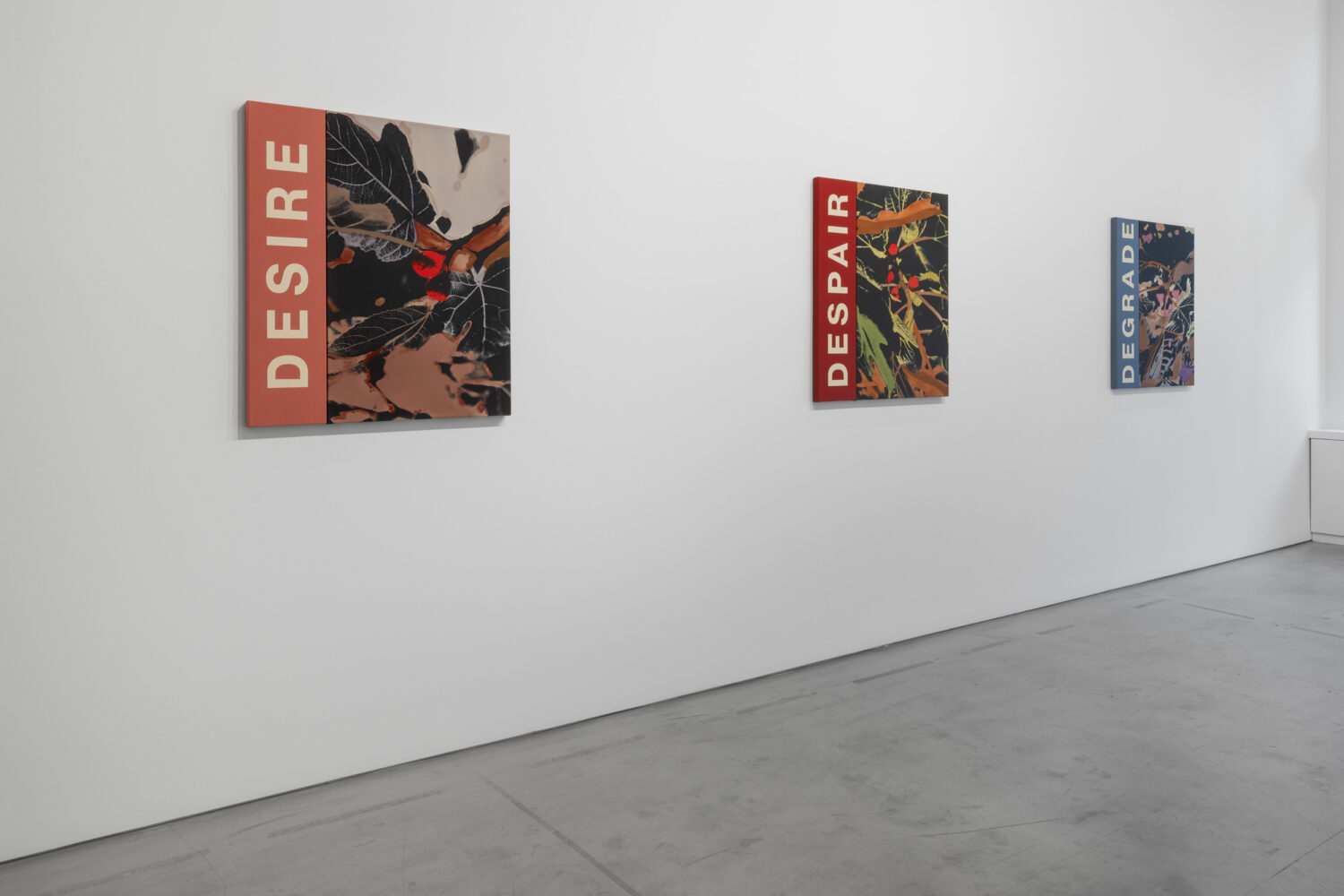

Past
Dena Yago
Induction
13 Sep - 21 Dec, 2024. Athens

HIGH ART X INTERMISSION
Dena Yago
Induction
13 September – 23 November
Opening: Friday 13th September, 19:00 – 21:00
+
Debased Poetics
at 19:00
Artist Dena Yago in discussion with writer Stephanie Lacava.
Visiting hours and location:
INTERMISSION
Wednesday – Saturday 12:00 – 20:00
Polidefkous 37A Piraeus 185 45 Greece
In May 1941, around 450 Disney employees in Burbank, California, went on general strike. Responding to unjust working conditions and aggravated by the fear of losing their jobs, the striking cartoonists turned to their own characters to garner public support for their cause. A marching Mickey Mouse holds a picket sign asking “Are we Mice or Men,” while Donald Duck angrily pounds the floor, screaming “This makes me mad! I’ve been making you folks laugh for years and years, but now something has happened that ISN’T FUNNY AT ALL.” In an open revolt against corporate exploitation, with only a few strokes of their pens, the cartoonists turned their characters into strike leaders, seizing them from the grip of the company’s intellectual property. An action that both rekindled the anarchic spirit of early cartoons and wielded satire as political allegory.
For “Induction,” Dena Yago equally takes on the role of an allegorist, setting some of the most charged and twisted visual icons of late capitalist life and the imminent climate crisis into a riot of symbolisms. The exhibition sets the scene in an urban environment with animals, plants, and other inanimate objects as their main protagonists. Adapting Pieter Bruegel’s 16th century allegorical etching The Triumph of Time, Yago has created a mural, The Pageant, that infuses the Renaissance scene with contemporary creatures navigating the hellscape of our present polycrisis. Here, the Grim Reaper is not riding a worn-out horse but a Spotted Lanternfly. Powerless to stop this invasive Asian cicada, New York City has mandated its citizens to “squish” any Lanternfly they encounter. In The Pageant, death is no longer riding but swarming as institutions shift the responsibility for our own ecological survival onto ourselves using individualized brute force – the bottom of a foot – as a last resort.
Elsewhere, Santorini donkeys pulling an Amazon delivery cart epitomize today’s economic conditions. Classic tokens of the rural Mediterranean lifestyle, recent reports have soured this wholesome fantasy by documenting spinal injuries and exhaustion that many donkeys have suffered from carrying masses of tourists up the steep mountains of the island. Here, the donkeys shoulder the cost of global product circulation run amok as they bear the burden of the Last Mile.
Famed Athenian protest dog Loukanikos presides over the entire scene impersonating Bruegel’s original guardian angel. Heralded as a “four-legged Che Guevara” in the wake of the protests against the European Union’s austerity measures implemented on Greece, the dog appears here like a reincarnation of striking Mickey, Donald, and Co., a mascot against social and political injustices.
Eight paintings feature close-ups of fig trees that are based on photos Yago has taken over the years. While traditionally associated as a symbol of knowledge, enlightenment and fertility within the biblical story of Adam and Eve, fig trees more recently have come to represent the heat island effects of dense urban environments, which create unusually warm microclimates. Non-native to the Northern hemisphere, they are now thriving in New York City, another indicator of sudden environmental shifts. Rendered in a stenciled, DIY aesthetic reminiscent of historical grass-roots organizing and zine culture, each painting is accompanied by a declaratory phrase: DESPAIR, DEPOSE, DESIRE, DECIDE, DISDAIN, DEBASE, DEGRADE, and DEPART. These agitprop-like phrases show how allegory can throttle between proaction or despair tracing a progression of unwinding and undoing, like a decision tree branching into varying outcomes.
Dividing the space and obstructing the view, the exhibition is divided by First (2024), a sculpture that resembles New York construction fencing. Channeling the sleek spatial interventions of Minimalism, they are markers of the speculative boom of real estate that churns through New York and Athens alike, acting as a literal allegory of financialization. Inhabitants are rendered into passive onlookers witnessing the transformations that are profoundly altering their urban habitat.
Out of the accelerated carousel of contemporary catastrophes and their accompanying memes, Yago extracts almost-already-past icons, freezing them in time and infusing them with new meaning before they are memory-holed into the warehouse of internet folklore and dead news cycles. Just as Bruegel’s allegory bears witness to moral crises long past, Yago allows us to scrutinize our present by re-enchanting some of its most ephemeral characters. In the face of our rapidly changing environment, “Induction” can be read in the abstract or materially: either the initiation of an unnamed process or the production of heat without contact. As these rhetorical and physical processes unravel, Yago reminds us that the creatures we typically forget, be it an insect or a donkey, may be our unlikely allies in a call to arms.
– Stephanie Seidel
1 cf. Esther Leslie, Hollywood Flatlands: Animation, Critical Theory and the Avant-Garde (London: Verso, 2004), 209 f.































